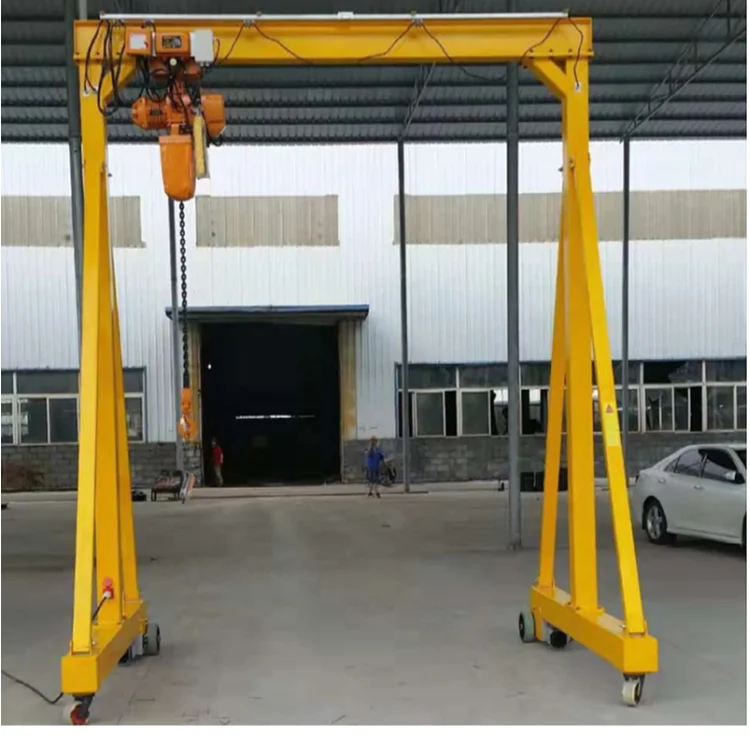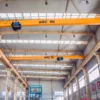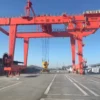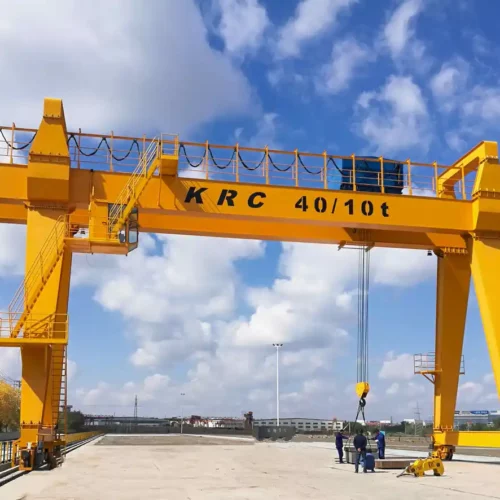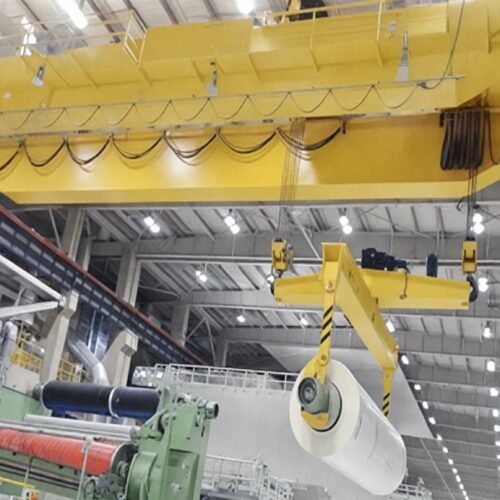mobile overhead crane Safety Certifications
Mobile overhead cranes are vital for material handling and construction activities but come with inherent safety risks. Ensuring the safety of these cranes involves adherence to stringent safety certifications and guidelines. Key certifications and regulatory standards governing mobile overhead crane safety include:
1. OSHA (Occupational Safety and Health Administration):
– 29 CFR 1910.179: Regulates the operation, maintenance, inspections, and usage of overhead cranes.
– 1910.184: Covers lifting equipment like slings used in crane operations.
2. ASME (American Society of Mechanical Engineers):
– B30 Series: This set of standards, particularly B30.2, B30.16, and B30.17, provide guidelines on the construction, installation, operation, inspection, and maintenance of overhead and gantry cranes.
3. ANSI (American National Standards Institute):
– ANSI/ASSP A10.42: Provides safety requirements for rigging, signal person qualifications, and other aspects pertinent to crane operations.
4. FEM (European Materials Handling Federation):
– FEM 1.001: Outlines classification for equipment including cranes, giving insights into the durability and lifecycle management.
5. ISO (International Organization for Standardization):
– ISO 9927-1: Focuses on the inspection of cranes, providing standardized procedures to ensure they remain safe to operate over time.
6. CSA (Canadian Standards Association):
– CSA B167: Standard for the design, testing, and safe operation of overhead traveling cranes.
7. CMAA (Crane Manufacturers Association of America):
– CMAA Specifications No. 70 & 74: These documents detail the design, service, and duty classifications for cranes and monorails used in manufacturing.
Regular inspections, operator training, and adherence to maintenance protocols are crucial aspects mandated by these standards. Compliance ensures the safety of operations, extending the lifespan of equipment and protecting human life and property.
List Reference Technical Parameters of “mobile overhead crane”
Mobile overhead cranes are versatile lifting machines commonly used in various industries for handling materials and heavy loads. Here are the key technical parameters for mobile overhead cranes:
1. Load Capacity: This specifies the maximum weight the crane can lift. It typically ranges from a few tons to several hundred tons, depending on the crane model.
2. Span: The distance between the crane’s supports, usually measured in meters. It determines the area that the crane can cover and typically ranges from a few meters to 30 meters or more.
3. Lift Height: The maximum height the hoist can raise a load, usually ranging from a few meters up to over 100 meters.
4. Hoist Speed: The speed at which the crane’s hoist can lift or lower a load, typically measured in meters per minute.
5. Travel Speed: The speed at which the crane can move along its tracks, usually measured in meters per minute or kilometers per hour.
6. Power Supply: The type and voltage of the electrical power required to operate the crane. Common voltages include 220V, 380V, and 440V, typically using either AC or DC.
7. Control System: The mechanism through which the crane is operated, which may include a remote control, cabin control, or pendant control.
8. Duty Class: The classification based on how frequently the crane will be used and its expected operational life, often specified as per ISO or FEM standards.
9. Wheel Load: The maximum load exerted on the crane’s wheels. It’s important for designing the runway and support structures.
10. Outreach: The horizontal distance the crane’s boom can extend, crucial for determining operational range and flexibility.
11. Turning Radius: The smallest circular turn a crane can make, important for maneuverability in constrained spaces.
12. Weight: The overall mass of the crane, which affects transport and installation requirements.
Understanding these parameters helps in selecting the appropriate mobile overhead crane for specific applications, ensuring efficient and safe operation.
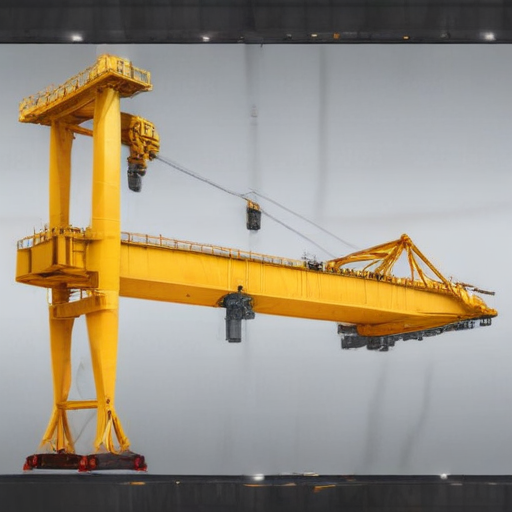
List Product features of “mobile overhead crane”
A mobile overhead crane offers a versatile solution for lifting and transporting heavy loads in various industrial environments. Below are some of the key product features:
1. Portability: Equipped with wheels or tracks, allowing easy movement across different work areas within a facility, enhancing operational flexibility.
2. Load Capacity: Ranges from a few tons to several hundred tons, catering to diverse industrial lifting requirements.
3. Mobility Options: Configurations include telescopic, articulated, and straight boom types, tailored to specific application needs.
4. Power Source: Available in diesel, electric, and hybrid models, providing options based on power availability and environmental considerations.
5. Ease of Operation: Incorporates user-friendly controls, often with remote operation capabilities, enabling precise maneuvering and positioning.
6. Safety Features: Includes overload protection, emergency stop functions, and anti-sway systems to ensure safe operation under various conditions.
7. Stability Systems: Outriggers or stabilizers enhance stability during lifting operations, especially with higher-capacity models.
8. Compact Design: Space-efficient designs allow for operation in confined areas without compromising performance.
9. Versatile Attachments: Compatibility with a variety of lifting accessories such as hooks, slings, and spreader bars for handling different types of loads.
10. Durability: Constructed with high-strength materials and corrosion-resistant coatings, suitable for demanding industrial environments.
11. Maintenance Accessibility: Engineered for easy access to critical components, simplifying routine maintenance and reducing downtime.
12. Customization: Options for tailored solutions to meet specific industry requirements, including height, reach, and lifting capabilities.
13. Advanced Technology: Integration of smart features like load monitoring systems and automated diagnostics for enhanced operational efficiency and reliability.
These features collectively make mobile overhead cranes an invaluable asset in sectors like manufacturing, warehousing, construction, and logistics, providing a blend of flexibility, safety, and performance.
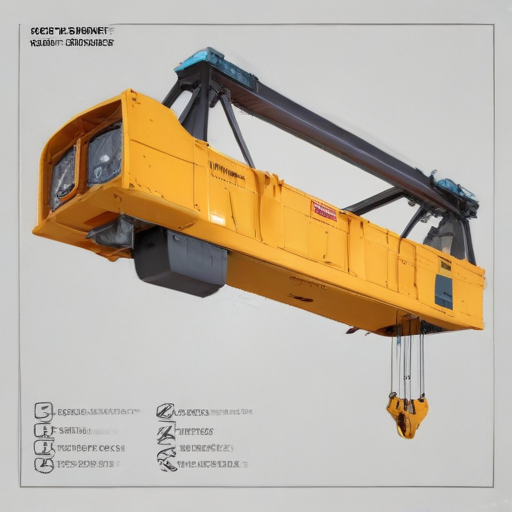
List Application of “mobile overhead crane”
Mobile overhead cranes are versatile lifting devices used in a variety of industries to handle heavy loads efficiently. Here are some key applications:
1. Construction Industry: Used to lift and move heavy construction materials such as steel beams, concrete slabs, and prefabricated sections. Mobile overhead cranes facilitate the assembly of structures and buildings by transporting materials across the job site.
2. Manufacturing: Essential in assembly lines for moving large components, machinery, and products between different stages of the production process. They enhance workflow efficiency by reducing manual handling.
3. Warehousing and Logistics: Employed to store and retrieve heavy items in warehousing facilities. They can navigate narrow aisles and reach tall storage racks, thereby optimizing space and improving inventory management.
4. Shipping and Ports: Utilized in loading and unloading cargo from ships to docks. With their mobility, they can operate across different dock locations, enhancing the efficiency of port operations.
5. Mining: In mining operations, these cranes handle the transportation of large machinery, equipment, and extracted materials. Their mobility allows for operation in rough terrains and remote areas.
6. Automotive Industry: Assist in the handling and assembly of heavy vehicle components like engines, chassis, and body parts. They support assembly lines by reducing downtime and manual labor requirements.
7. Energy Sector: Applied in the installation, maintenance, and repair of heavy equipment in power plants and wind farms. They are crucial for handling large turbines, generators, and other energy infrastructure components.
8. Aerospace: Move large aircraft parts and assemblies within manufacturing plants and maintenance facilities. Their precision and control help in handling sensitive components without damage.
9. Railways: Facilitate the maintenance and assembly of railway infrastructure and trains by lifting and transporting heavy tracks, engines, and carriages.
10. Entertainment and Events: Used to set up stages, lighting, sound systems, and large props or screens for concerts, festivals, and other large-scale events due to their versatility and ease of relocation.
These diverse applications underscore the critical role mobile overhead cranes play in enhancing operational efficiency, safety, and productivity across multiple industries.
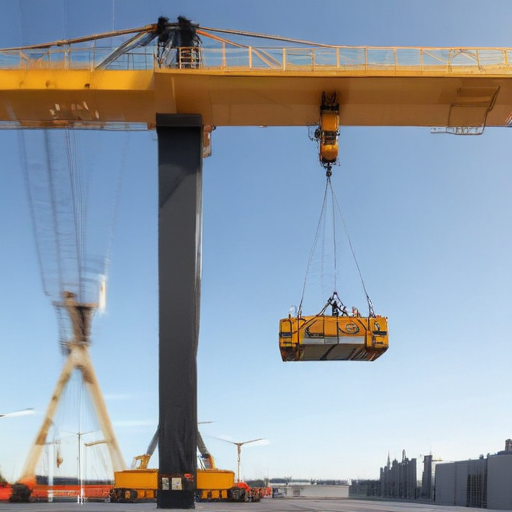
List Various Types of “mobile overhead crane”
Mobile overhead cranes are versatile lifting devices designed to be easily transported and set up at various job sites. Here are some types of mobile overhead cranes:
1. Truck-Mounted Cranes:
– These cranes are mounted on a truck chassis, providing easy road transportation and quick setup. They are highly mobile and can be used for a variety of lifting tasks in different locations.
2. Rough Terrain Cranes:
– Designed for off-road construction sites, these cranes have large tires and robust suspension systems to navigate uneven and rough terrain. They offer excellent mobility and stability in challenging environments.
3. Crawler Cranes:
– Featuring tracks instead of wheels, crawler cranes provide stability and can travel across soft ground. They are particularly suited for large-scale construction projects and can lift heavy loads over long distances.
4. Carry Deck Cranes:
– Compact and highly maneuverable, carry deck cranes are perfect for confined spaces. They have a rotating boom and a flat deck for transporting loads around job sites.
5. Rail-Mounted Gantry Cranes:
– These cranes travel on rails and are commonly used in industrial environments like shipyards and warehouses. While not as mobile as wheeled cranes, they provide efficient lifting and transport capabilities along the rail path.
6. Portable Gantry Cranes:
– Lightweight and easy to assemble, portable gantry cranes can be moved manually or via small wheeled systems. They are ideal for light to medium lifting tasks and often used in workshops and maintenance facilities.
7. Telescopic Cranes:
– Equipped with a boom that can extend and retract, telescopic cranes offer versatile reach and height capabilities. They are mounted on mobile bases, making them adaptable to various lifting needs.
8. Side Lifter Cranes:
– These cranes are designed to load and unload containers from the side of the vehicle. They are highly effective for logistics and shipping industries, offering quick container handling.
These types of mobile overhead cranes provide flexible solutions for a range of lifting requirements, enhancing efficiency and productivity across different industries.
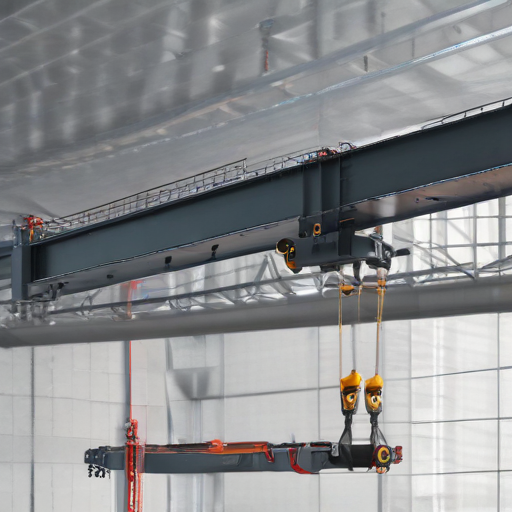
mobile overhead crane Accessories Upgrades and Custom Manufacturing Options
Mobile overhead cranes are versatile pieces of equipment used in various industries for heavy lifting and material handling. To maximize efficiency and adaptability, a range of accessories, upgrades, and custom manufacturing options are available.
Accessories:
1. Load Indicators and Weighing Systems: Enhance safety by providing real-time weight monitoring.
2. Remote Controls: Offer operational flexibility and improved safety by allowing the crane to be controlled from a distance.
3. Anti-Collision Systems: Utilize sensors to prevent accidents by detecting potential obstacles.
4. Lifting Attachments: Customizable attachments for specific tasks, such as magnetic lifters, vacuum lifters, and grapples.
5. Spreader Beams: Distribute the load weight evenly to prevent deformation and ensure safe lifting of large items.
Upgrades:
1. Variable Frequency Drives (VFDs): Provide smoother and more precise control over lifting and traveling speeds.
2. Wireless Communication Systems: Enable better integration with other equipment and efficient orchestration of complex lifting tasks.
3. Enhanced Safety Features: Additional limit switches, emergency stop systems, and fail-safe mechanisms to improve operational safety.
4. Energy-Efficient Motors: Reduce operational costs and minimize environmental impact by upgrading to high-efficiency motors.
Custom Manufacturing Options:
1. Tailored Load Capacities: Design cranes to handle specific load requirements, ensuring optimal performance for particular jobs.
2. Adjustable Heights and Spans: Customizable to fit specific work environments and operational needs, enhancing versatility and efficiency.
3. Environmental Adaptation: Cranes can be manufactured to withstand harsh conditions such as extreme temperatures, corrosive environments, or strong winds.
4. Automated Systems: Incorporate automation for repetitive tasks to increase productivity and reduce human error.
Investing in these accessories, upgrades, and custom manufacturing options can significantly enhance the functionality, safety, and efficiency of mobile overhead cranes, making them a more effective solution in various industrial applications.
List Quality Control and The Manufacturing Process of “mobile overhead crane”
Quality Control and Manufacturing Process of Mobile Overhead Cranes
#### Quality Control
1. Material Inspection: Ensure all materials meet specified standards. This includes checking steel grades, welding rods, and components for defects.
2. Supplier Evaluation: Conduct audits and assessments of suppliers to ensure the quality of raw materials and components.
3. In-process Inspection: Regular checks are performed during critical stages of manufacturing to detect and rectify issues early.
4. Non-destructive Testing (NDT): Utilize radiographic, ultrasonic, and magnetic particle testing to inspect welds and other critical parts.
5. Load Testing: Perform load tests to verify that the crane can handle its rated capacity safely.
6. Functional Testing: Test electrical, hydraulic, and mechanical systems to ensure proper operation.
7. Final Inspection: A comprehensive final check includes visual inspections, checking dimensional accuracy, and verifying the alignment of components.
8. Certification: Compliance with industry standards such as ISO, OSHA, and other regulatory requirements.
#### Manufacturing Process
1. Design and Engineering: Create detailed drawings and specifications. Simulate and optimize designs using CAD software.
2. Material Procurement: Source high-quality materials and components from vetted suppliers.
3. Cutting and Shaping: Cut and shape metal parts using CNC machining, plasma cutting, and laser cutting as per design specifications.
4. Welding and Assembly: Weld steel parts according to the design. Assemble major components like the bridge, trolley, and hoist.
5. Surface Treatment: Apply surface treatments like sandblasting and painting to protect against corrosion.
6. Machining: Perform precision machining on critical parts to ensure they meet exact dimensions and tolerances.
7. Component Installation: Mount motors, hydraulic systems, electrical components, and control systems.
8. Pre-Assembly Testing: Conduct initial tests to ensure mechanical parts and systems work seamlessly.
9. Final Assembly: Assemble the final structure, including running gears, wheels, and other moving parts.
10. Quality Control and Testing: Execute rigorous quality and functional testing to ensure all specifications and safety standards are met.
11. Documentation and Shipping: Document all test results. Package and prepare the crane for shipping to the customer, ensuring no damage during transit.
This streamlined approach ensures that mobile overhead cranes are produced and delivered to the highest standards of quality and reliability.
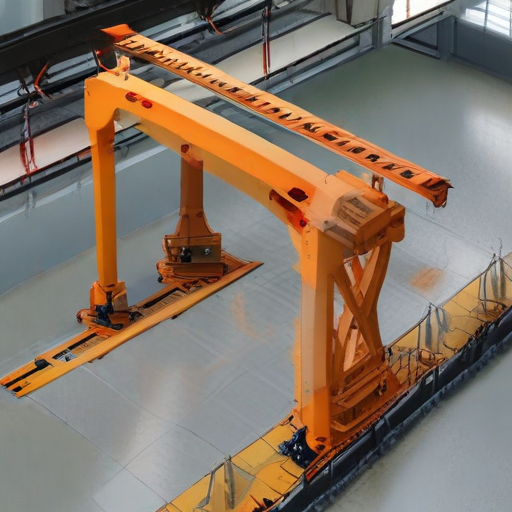
How to use “mobile overhead crane”
Using a mobile overhead crane involves several key steps to ensure safety and efficiency. Here’s a concise guide:
1. Pre-Operation Checks:
– Inspect the Crane: Check for any visible damage or wear on the crane, hooks, and chains.
– Verify Controls: Ensure that the crane’s controls are functioning properly.
– Load Capacity: Verify the crane’s load capacity and ensure it matches the task requirements.
2. Setting Up:
– Position the Crane: Place the crane on a stable, level surface.
– Secure the Area: Mark off the working area to prevent unauthorized entry and potential hazards.
3. Lifting and Moving Loads:
– Attach the Load: Use the appropriate rigging gear to securely attach the load to the crane’s hook.
– Lift Smoothly: Gradually lift the load a few inches to check the balance and stability.
– Navigate Carefully: Move the load to the desired location, following a slow and steady pace to avoid swinging.
4. Placing the Load:
– Lower the Load: Carefully lower the load to the ground or workspace, ensuring it is placed securely.
– Detach the Load: Once the load is settled, safely detach the rigging gear.
5. Shutting Down:
– Park the Crane: Move the crane to a designated storage area.
– Turn Off Power: Ensure the crane is powered off and secured.
6. Post-Operation:
– Inspect Equipment: After use, inspect the crane for any wear and tear, and report any issues.
– Maintenance: Perform any necessary routine maintenance.
Safety Tips:
– Always follow manufacturer guidelines and safety regulations.
– Never exceed the crane’s load capacity.
– Use hand signals or communication devices to coordinate actions.
– Wear appropriate personal protective equipment (PPE).
By following these steps meticulously, you can operate a mobile overhead crane efficiently and safely.
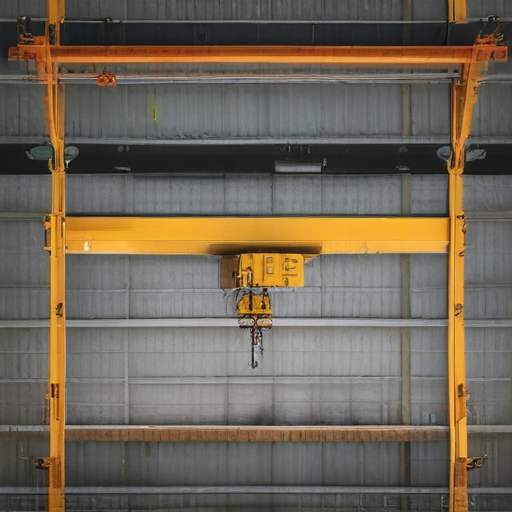
“mobile overhead crane” Comparative Analysis
Comparative Analysis of Mobile Overhead Cranes
Introduction
Mobile overhead cranes are versatile lifting devices used in various industries such as construction, manufacturing, and logistics. Their portability and ease of use make them a popular choice for material handling tasks. This analysis compares mobile overhead cranes based on mobility, capacity, ease of installation, and cost.
Mobility
Mobile overhead cranes distinguish themselves with superior mobility compared to fixed overhead cranes. Mounted on wheels or tracks, they can be relocated easily within a site or facility, offering significant flexibility. This is particularly advantageous in dynamic work environments where lifting needs may change frequently.
Capacity
Mobile overhead cranes generally offer lower lifting capacities compared to their fixed counterparts. Capacities range from a few tons to several tens of tons, sufficient for many medium-duty tasks but not for extremely heavy lifting. For tasks requiring higher load capacities, fixed overhead cranes or other lifting mechanisms may prove more appropriate.
Ease of Installation
One of the standout features of mobile overhead cranes is their ease of installation. Unlike fixed cranes, which require substantial infrastructure and installation time, mobile cranes are either ready to use out of the box or involve minimal assembly. This expedites deployment and reduces downtime, allowing for quicker adaptation to changing project requirements.
Cost
In terms of cost, mobile overhead cranes are generally more economical due to lower installation and infrastructural expenses. While the initial purchase price might be comparable to fixed cranes, the savings on installation and the flexibility in usage offer additional financial benefits. However, the lifespan and maintenance costs could vary, potentially affecting long-term investment assessments.
Conclusion
Mobile overhead cranes excel in flexibility and ease of installation, providing significant advantages in dynamic and variable work environments. However, their lower lifting capacities make them less suitable for heavy-duty applications. Cost considerations often favor mobile cranes due to lower associated installation expenses, although long-term costs should be evaluated based on specific use cases.
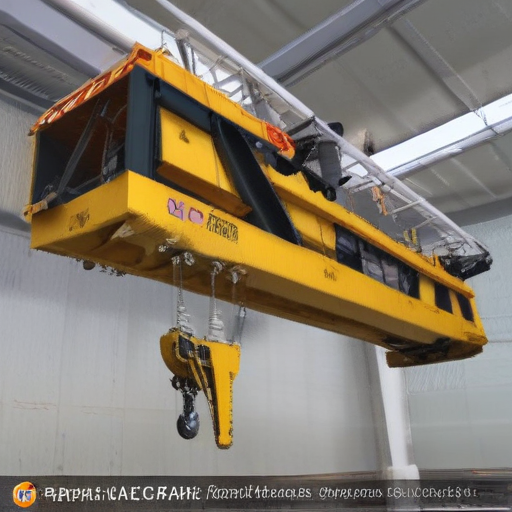
“mobile overhead crane” Warranty and Support
Mobile Overhead Crane Warranty and Support
Warranty:
Our mobile overhead cranes come with a comprehensive warranty that ensures peace of mind and reliable performance. The warranty period spans two years from the date of delivery and covers all structural components, electrical systems, and mechanical parts. This warranty is designed to protect against defects in materials and workmanship under normal use. Any issues arising from regular, authorized use will be addressed promptly. Please note that the warranty does not cover damages caused by improper use, unauthorized modifications, or lack of maintenance.
Support:
We pride ourselves on providing exceptional customer support. Our dedicated support team is available 24/7 to assist you with any queries, troubleshooting, or technical issues you may encounter during the lifespan of your mobile overhead crane. Additionally, we offer:
1. Installation and Training: Certified technicians are available to assist with installation, ensuring that your crane is set up correctly and operates safely. We also provide training sessions for your staff to ensure proper usage and maintenance practices.
2. Regular Maintenance and Inspections: Scheduled maintenance and inspections are offered to keep your equipment in optimal condition and to prolong its operational life. Our service plans can be tailored to suit your specific requirements.
3. Parts and Repairs: We maintain a comprehensive inventory of spare parts to minimize downtime in the event of a breakdown. Our experienced service engineers are available for on-site repairs and maintenance, ensuring quick resolution of any issues.
4. Technical Assistance: Our experts provide ongoing technical support through various channels, including phone, email, and live chat. Detailed user manuals and troubleshooting guides are also provided to help you resolve minor issues independently.
Your satisfaction is our top priority. With our robust warranty and unparalleled support, you can be confident in the performance and reliability of your mobile overhead crane.
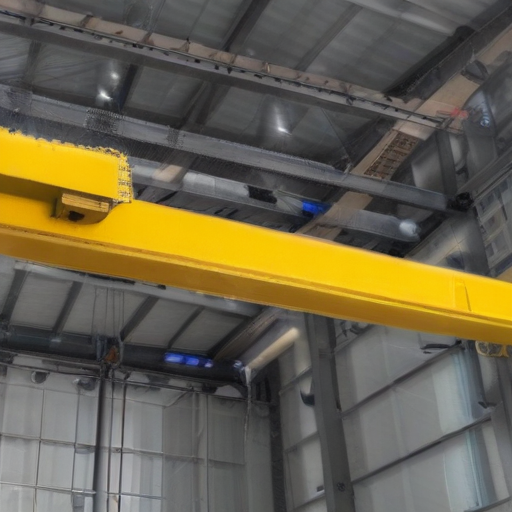
List “mobile overhead crane” FAQ
Mobile Overhead Crane FAQ
1. What is a mobile overhead crane?
– A mobile overhead crane is a lifting device capable of traveling on wheels or tracks to various locations for lifting heavy loads. Unlike fixed overhead cranes, mobile overhead cranes can be relocated to different work sites as needed.
2. What are the common types of mobile overhead cranes?
– The most common types include truck-mounted cranes, rough terrain cranes, all-terrain cranes, and crawler cranes.
3. What industries typically use mobile overhead cranes?
– Industries such as construction, manufacturing, shipping, logistics, and warehousing commonly utilize mobile overhead cranes for lifting and transporting heavy materials.
4. How do mobile overhead cranes operate?
– They typically use hydraulic systems powered by an engine. Cranes have a telescoping boom or a jib that can be extended and positioned to lift and move loads.
5. What are the weight limits for these cranes?
– Weight limits vary widely depending on the model and type of crane. They can range from a few tons to several hundred tons.
6. What training is required to operate a mobile overhead crane?
– Operators usually need specialized training and certification, which typically includes understanding crane mechanics, load balancing, safety protocols, and hands-on operation practice.
7. How do you ensure safety when using a mobile overhead crane?
– Safety measures include regular maintenance, proper load assessment, use of safety gear, adherence to weight limits, operator training, and following guidelines from regulatory bodies like OSHA.
8. What are the advantages of using a mobile overhead crane?
– The primary advantages are mobility, flexibility in various terrains, ease of setup, and the ability to lift and move heavy loads across multiple locations.
9. Are there any disadvantages?
– Disadvantages include higher operating costs, complexity in handling in confined spaces, and the necessity of skilled operators.
10. How can I choose the right mobile overhead crane for my needs?
– Assess factors like load capacity, height and reach requirements, type of terrain, frequency of use, and budget. Consulting with a crane specialist can also help identify the best option for specific needs.
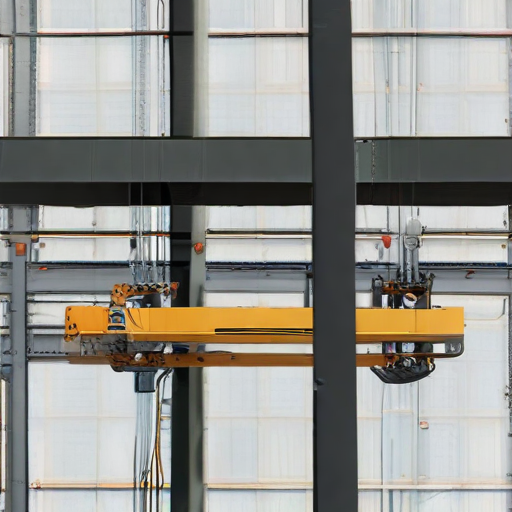
Top 10 FAQ with answer about mobile overhead crane for Buyer Sourcing from China
Top 10 FAQs About Sourcing Mobile Overhead Cranes from China
1. What is a Mobile Overhead Crane?
– A mobile overhead crane is a versatile lifting device typically used in factories, warehouses, and construction sites. Unlike fixed cranes, it can be moved according to the needs of the job site.
2. Why Source Mobile Overhead Cranes from China?
– China offers competitive pricing, advanced manufacturing technology, and high-quality standards. Many suppliers also provide customization options and robust after-sales support.
3. How Do I Ensure the Quality of the Crane?
– Look for suppliers with ISO 9001 certification and request third-party inspection reports. Visiting the factory for quality checks is also advisable.
4. What Are the Common Load Capacities Available?
– Standard models range from 1 to 100 tons. Custom models can be designed for higher capacities based on the buyer’s requirements.
5. How Can I Verify the Supplier’s Credibility?
– Check reviews, ask for client references, and verify business licenses. Websites like Alibaba and Global Sources often have vetting processes for their listed suppliers.
6. What Are the Expected Lead Times?
– Lead times vary but generally range from 30 to 60 days for standard models. Custom designs may require a longer lead time.
7. Are Spare Parts and After-Sales Services Available?
– Most reputable Chinese suppliers offer spare parts and after-sales services. Ensure service agreements are clearly outlined in the contract.
8. What Are the Shipping Options?
– Common shipping methods include sea freight, air freight, and express courier services. The choice depends on urgency and budget.
9. What Payment Terms Are Accepted?
– Common payment terms include T/T (Telegraphic Transfer), L/C (Letter of Credit), and sometimes PayPal for smaller orders. Establish clear terms to avoid misunderstandings.
10. Can the Crane Be Customized?
– Yes, most suppliers offer customization options. You can specify the load capacity, dimensions, motor types, and additional features like remote control or automated systems.
Sourcing a mobile overhead crane from China offers various advantages but requires due diligence to ensure product quality and reliable supplier selection.

